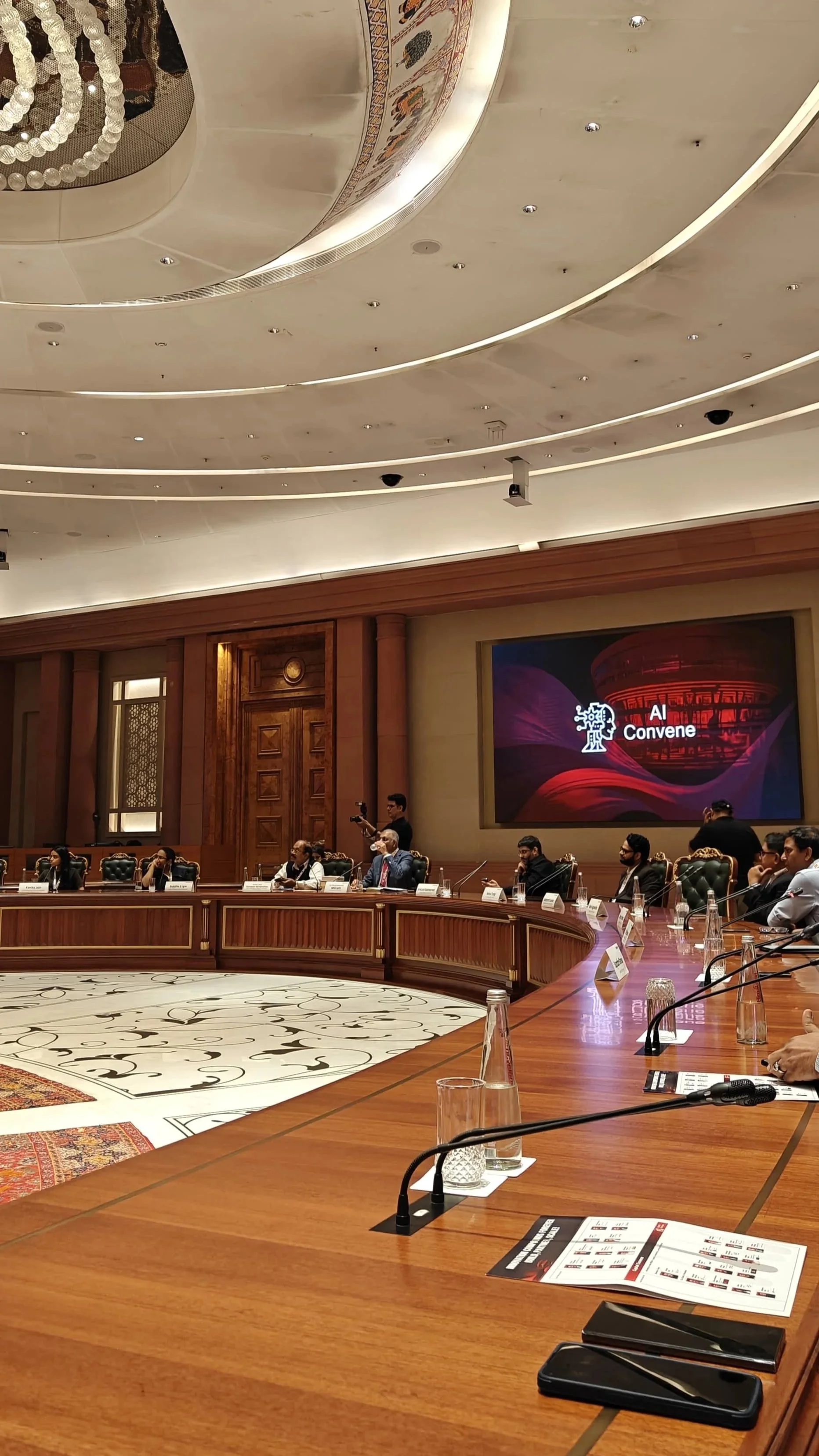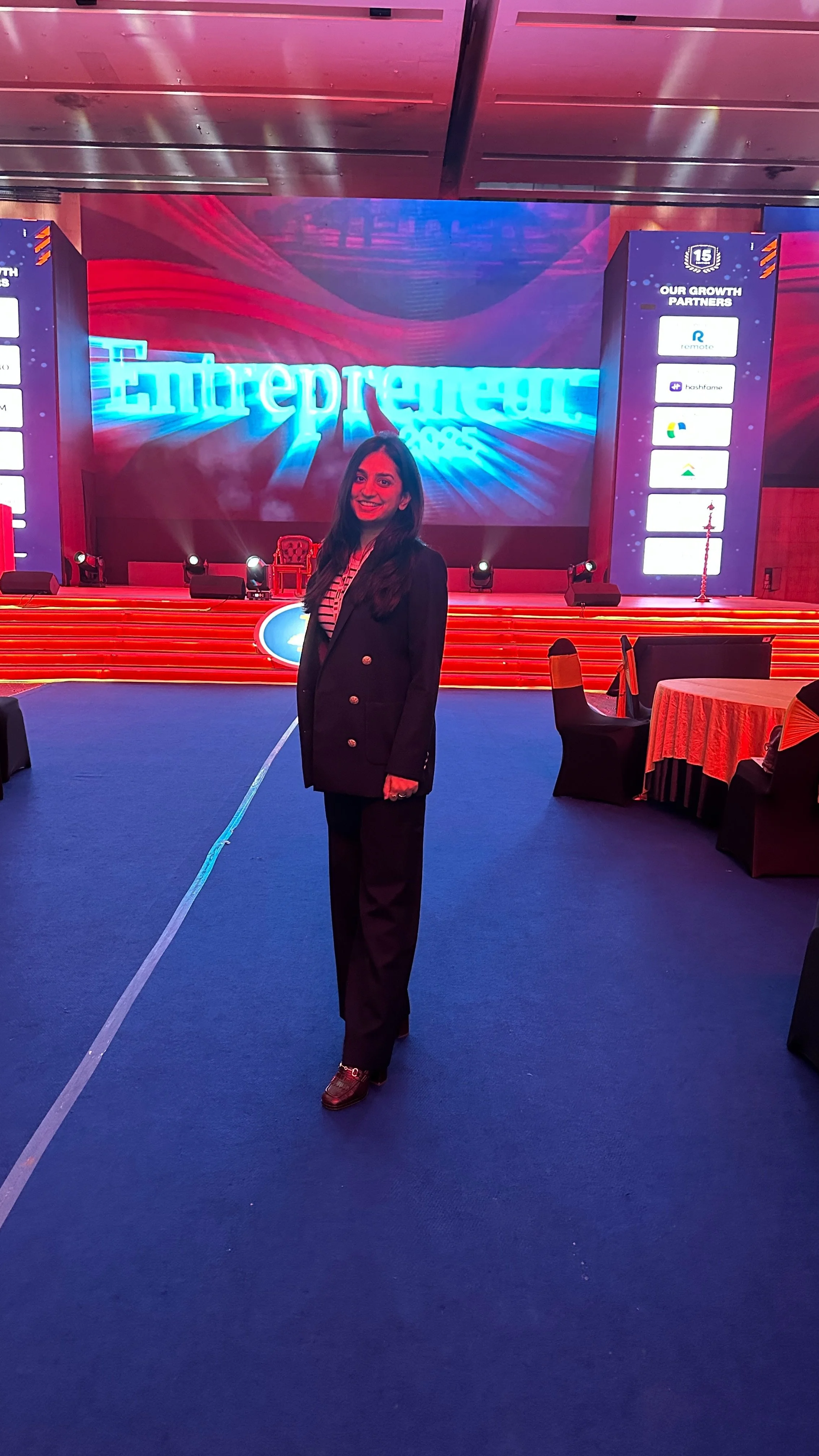Entrepreneur 2025 Start-up Summit: Through My Lens
As I stepped into the auditorium at Bharat Mandapam for Entrepreneur 2025, I wasn’t sure what attending an Entrepreneurship Summit in India would feel like. But having attended similar events throughout my MBA, I expected the same old script- a formal exchange of ideas, polished sentences, slide decks, and carefully rehearsed points.
Strangely, this wasn’t that. It had its own rhythm. There was a quiet ease in the room. A certain looseness to it- it felt more instinctive and personal. It wasn’t buttoned up. It felt less performative, in the best way.
The theme this year was Viksit Bharat: How Entrepreneurs Will Shape the Future of India. Viksit Bharat literally means “Developed India,” but no one here seemed to be chasing someone else’s version of it. So here’s my attempt to capture that day- not as a play-by-play, but through the observations that caught my attention and stayed with me.
Innovation That Starts at the Roots
I’m sure we’ve all heard the word innovation thrown around so many times that it’s almost lost its weight. But the panel on India’s Innovation Horizon somehow managed to bring it back down to earth. For once, innovation didn’t sound imported. It sounded scrappy and adaptive- all about grassroots ideas meeting unicorn-level ambition. It sounded like founders designing for affordability, accessibility, and context- built in India for India, with global scale in sight.
As someone who’s building in this ecosystem, I know how tempting imitation can be. You borrow frameworks that seem proven, use language that sounds global, adopt structures that look familiar. But it’s not until you try to make something fit the Indian reality that you realise the context is the innovation.
That’s also why what followed on stage landed so well. Mr. Ramanan Ramanathan, Board Member for IndiaAI Mission, didn’t treat innovation like a luxury you can only afford once you’re part of boardrooms. He treated it as an economic necessity for everyone. He spoke about how innovation in India shouldn’t have to start in big boardrooms; it should begin at the roots- in school labs, university incubators, and community innovation centres. And then eventually, it’s on us to build on those foundations- to make sure innovation flows through the places where ideas actually begin- not top down, but from the ground up.
Purpose As Strategy: Lessons from Mr. Gopal Srinivasan
The fireside chat with TVS Capital’s chairman, Mr. Gopal Srinivasan, was one of those rare conversations where nothing felt rehearsed. He didn’t dance around with abstractions- he went straight for the jugular: numbers, direction, intent.
He described India’s MSME sector- with over 67 million entrepreneurs- as the country’s true economic engine. He highlighted how the pool of domestic capital in India is expanding fast- enough to push the VC and PE industry to grow 3-5 times in the coming years. And that meant more capital rooted in the country, more room for founders outside the usual urban hubs, and a broader base of who gets to build.
On innovation, his perspective seemed equally pragmatic. Innovation, he argued, can be systematically de-risked. He pointed to the R&D Innovation Fund- describing it as a “new JAM Trinity”, referencing the original Jan Dhan-Aadhaar-Mobile framework that drove India’s digital leap- as a signal of how policy can shape risk appetite and build real confidence in the ecosystem.
Somewhere between the talk of capital and innovation, the conversation swerved to something less visible but far more defining- purpose. Mr. Srinivasan dismantled the idea that success is synonymous with scale.
“A wild pursuit of scale is meaningless,” he said.
He spoke about the rare wisdom of slowing down in a culture obsessed with acceleration. Purpose, in this context, was clear, firm, and strategic- not dressed up, not softened. It left me extremely curious about the stubborn reasons people keep showing up to build, a thought I carried with me into conversations with other founders throughout the day.
Trust, Creativity, and the Long Game
Mr. Viraj Bahl’s story was very personal as he spoke about building Veeba long before the “Made in India” tag became a branding tool- taking something as ordinary as sauces and building it into a trusted household name. It was a story about patience, staying obsessed with the product, and earning trust one shelf at a time. There was something special in hearing him talk about endurance in a world that often chases the quick wins.
Then came Mr. Farhan Akhtar. He talked about creativity not as a side note, but as the core of how you build. About curiosity and empathy as real leadership tools. He said,
“Please be original. Do not be a cheap imitation…You have a voice, you have a story, please be honest to that.”
He brought it back to how much of what we build here still gets measured against what the West does- and why that needs to change. Maybe that’s the real story of Viksit Bharat: not a country chasing someone else’s finish line, but learning how to build things that endure.
AI Convene x Capital Convene: Building for the Next 500 Million
Halfway through the event, a small group of us stepped into that room- yes, the one that hosted the G20 Summit- for something more conversational: the AI Convene and Capital Convene roundtables. Government representatives, founders, and partners from leading funds sat around trading ideas, frustrations, and strategic plans to figure out what it would take to move forward together.
It mirrored the larger spirit of Viksit Bharat: progress without exclusion. Conversation moved through the big themes of how to build responsibly, where to balance automation with human capital, how to keep innovation indigenous, and how to bridge the divide between the AI-haves and have-nots.
We spoke about how state-backed support for the next digital wave won’t just be about smarter technology- it will be about vernacular intelligence, affordability, and reaching the next 500 million users. Tier-2 and Tier-3 cities came up often- not as an afterthought, but as emerging digital powerhouses. As places where cutting-edge tech is quietly fueling new-age pioneers, where digital-first careers are taking shape, and where the future is being built in real time. Founders, investors, and policymakers were challenging each other, questioning gaps, and aligning on what needs to happen next- to build faster, smarter, and more anchored.
Founders, for once, were not talking in hypotheticals. They were building things that actually worked. Tools for national security that run on compact models. Lending platforms that make onboarding frictionless. Education that looks like it belongs in the digital age. Agriculture models that help farmers diagnose plant diseases on their phones in seconds. None of this was dressed up to sound glamorous. It was specific, uncomplicated, and deeply contextual. Built to fit the language, the cost structures, the infrastructure, and the people.
From there, the conversation flowed naturally into the Capital Convene. If the AI Convene was about big ideas, this one was about making them possible. Investors and founders talked about capital flows, shifting risk appetites, early vs. growth-stage dynamics, policy scaffolding, and the growing pull of Tier-2 and Tier-3 cities. “Patient capital”- long-term, research-driven funding that fuels sustainable innovation- came up often, as did micro-VCs, responsible investing, and how to build trust between founders and investors when the time horizons stretch longer.
The session was aptly summarised by the chair:
“You’re not here to get a job. You’re here to create jobs- in whatever way you can.”
That line captured the spirit of the room: a shared reckoning about what it will take- structurally, collaboratively- to build for the next 500 million. You could see India shaping the future of entrepreneurship like never before, creating enduring brand ecosystems from the ground up.
Beyond the Stages: What I Took Away
If I had one wish for the main stage, it would be to hear more female voices up there. Most of the big conversations were still led by men. But as I looked beyond the grand panels and keynote sessions, that imbalance started to look a little different. Walking around the venue, meeting founders at their booths, and chatting with different teams from all over the country made me realize how diverse India’s entrepreneurial ecosystem truly is.
It felt like a glimpse of what the future could look like- a stage that reflects the full spectrum of who’s actually building. It reminded me that the shift is already happening- maybe not always under the spotlight, but in the work itself.
Each stall had a story: from an AI startup transforming consumer research and marketing strategy to a social enterprise addressing menstrual health, from a small team tackling employee retention challenges inside organizations to another team looking to simplify the chaos of renting. Every founder I met was solving something specific, something that mattered to them. I left each conversation feeling more inspired because of the sincerity of their vision.


